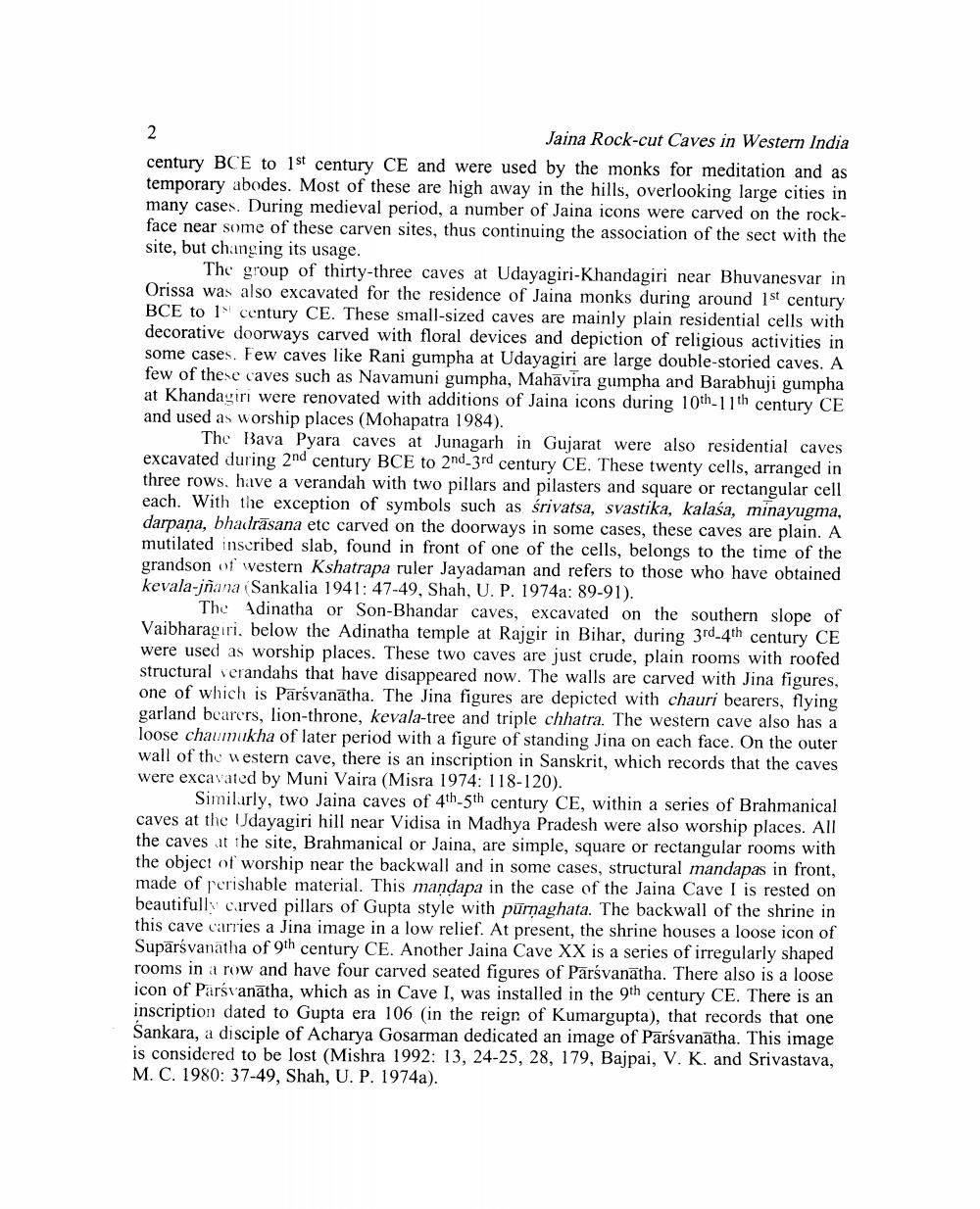________________
2
Jaina Rock-cut Caves in Western India century BCE to 1st century CE and were used by the monks for meditation and as temporary abodes. Most of these are high away in the hills, overlooking large cities in many cases. During medieval period, a number of Jaina icons were carved on the rockface near some of these carven sites, thus continuing the association of the sect with the site, but changing its usage.
The group of thirty-three caves at Udayagiri-Khandagiri near Bhuvanesvar in Orissa was also excavated for the residence of Jaina monks during around 1st century BCE to 1 century CE. These small-sized caves are mainly plain residential cells with decorative doorways carved with floral devices and depiction of religious activities in some cases. Few caves like Rani gumpha at Udayagiri are large double-storied caves. A few of these caves such as Navamuni gumpha, Mahavira gumpha and Barabhuji gumpha at Khandagiri were renovated with additions of Jaina icons during 10th-11th century CE and used as worship places (Mohapatra 1984).
The Bava Pyara caves at Junagarh in Gujarat were also residential caves excavated during 2nd century BCE to 2nd-3rd century CE. These twenty cells, arranged in three rows, have a verandah with two pillars and pilasters and square or rectangular cell each. With the exception of symbols such as śrivatsa, svastika, kalasa, minayugma, darpaṇa, bhadrasana etc carved on the doorways in some cases, these caves are plain. A mutilated inscribed slab, found in front of one of the cells, belongs to the time of the grandson of western Kshatrapa ruler Jayadaman and refers to those who have obtained kevala-jñana (Sankalia 1941: 47-49, Shah, U. P. 1974a: 89-91).
The Adinatha or Son-Bhandar caves, excavated on the southern slope of Vaibharagiri, below the Adinatha temple at Rajgir in Bihar, during 3rd-4th century CE were used as worship places. These two caves are just crude, plain rooms with roofed structural verandahs that have disappeared now. The walls are carved with Jina figures, one of which is Parsvanatha. The Jina figures are depicted with chauri bearers, flying garland bearers, lion-throne, kevala-tree and triple chhatra. The western cave also has a loose chaumukha of later period with a figure of standing Jina on each face. On the outer wall of the western cave, there is an inscription in Sanskrit, which records that the caves were excavated by Muni Vaira (Misra 1974: 118-120).
Similarly, two Jaina caves of 4th-5th century CE, within a series of Brahmanical caves at the Udayagiri hill near Vidisa in Madhya Pradesh were also worship places. All the caves at the site, Brahmanical or Jaina, are simple, square or rectangular rooms with the object of worship near the backwall and in some cases, structural mandapas in front, made of perishable material. This mandapa in the case of the Jaina Cave I is rested on beautifully carved pillars of Gupta style with purnaghata. The backwall of the shrine in this cave carries a Jina image in a low relief. At present, the shrine houses a loose icon of Suparśvanatha of 9th century CE. Another Jaina Cave XX is a series of irregularly shaped rooms in a row and have four carved seated figures of Parsvanatha. There also is a loose icon of Parsvanatha, which as in Cave I, was installed in the 9th century CE. There is an inscription dated to Gupta era 106 (in the reign of Kumargupta), that records that one Sankara, a disciple of Acharya Gosarman dedicated an image of Parsvanatha. This image is considered to be lost (Mishra 1992: 13, 24-25, 28, 179, Bajpai, V. K. and Srivastava, M. C. 1980: 37-49, Shah, U. P. 1974a).




